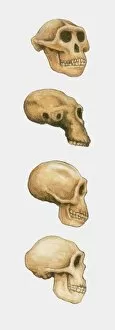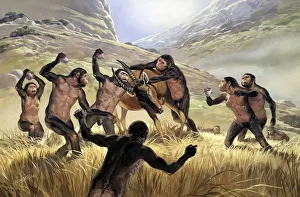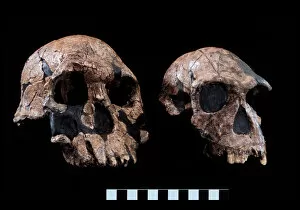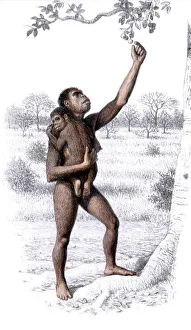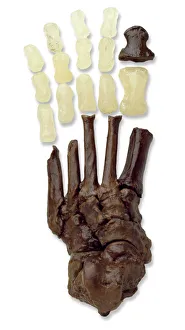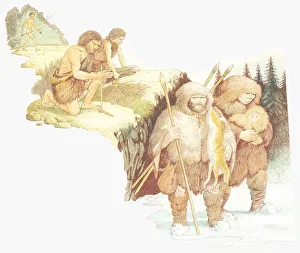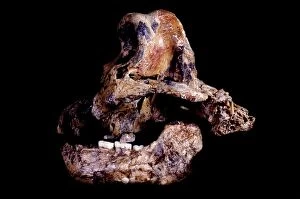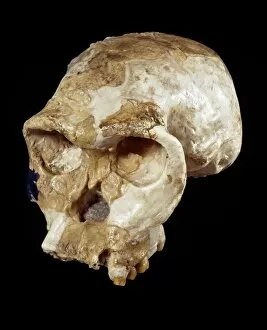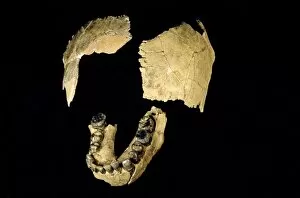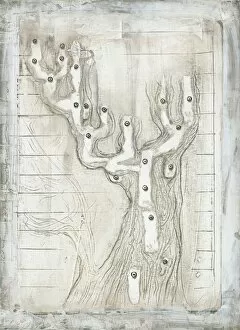Homo Habilis Collection
"Homo habilis: The Early Toolmaker in Human Evolution" In the vast timeline of human evolution, Homo habilis holds a significant place
All Professionally Made to Order for Quick Shipping
"Homo habilis: The Early Toolmaker in Human Evolution" In the vast timeline of human evolution, Homo habilis holds a significant place. This species, illustrated alongside Australopithecus and Homo sapiens skulls, showcases the transition from our ape-like ancestors to more advanced beings. Captured in action, Homo habilis is depicted as an active participant in their environment. Their presence is further emphasized by the comparison with Homo rudolfensis (KNM-ER 1470) and another specimen (KNM-ER 1813). Interestingly, we also get a glimpse into the diversity within this species through the portrayal of a female individual. The cast of an Australopithecine or Homo habilis foot (OH8) provides insights into their locomotion abilities. These hominids were gradually adapting to bipedalism – one of humanity's defining traits. Through detailed 3D computer images showcasing various hominid skulls, we can observe how Homo habilis stands apart from its predecessors and successors. It serves as a bridge between ancient apes and modern humans. With plain backgrounds emphasizing their features, adult specimens of both homo habilis and homo sapiens sapiens are juxtaposed for comparison purposes. This contrast highlights the progress made throughout human evolution. Examining the skull reveals crucial information about cranial capacity and brain development during this period. Such discoveries contribute significantly to our understanding of early human cognition. Illustrations featuring both Homo sapiens and Homo habilis emphasize similarities while highlighting key differences that set them apart on our evolutionary journey. Lastly, artwork depicting male and female individuals offers valuable insights into gender roles within early human societies. It sparks curiosity about social dynamics among these ancient toolmakers. Homo habilis' hunting prowess comes alive through captivating artwork (C013 / 6549), reminding us that survival skills played a vital role in shaping our ancestors' lives. Homo habilis represents a crucial milestone in human evolution.

